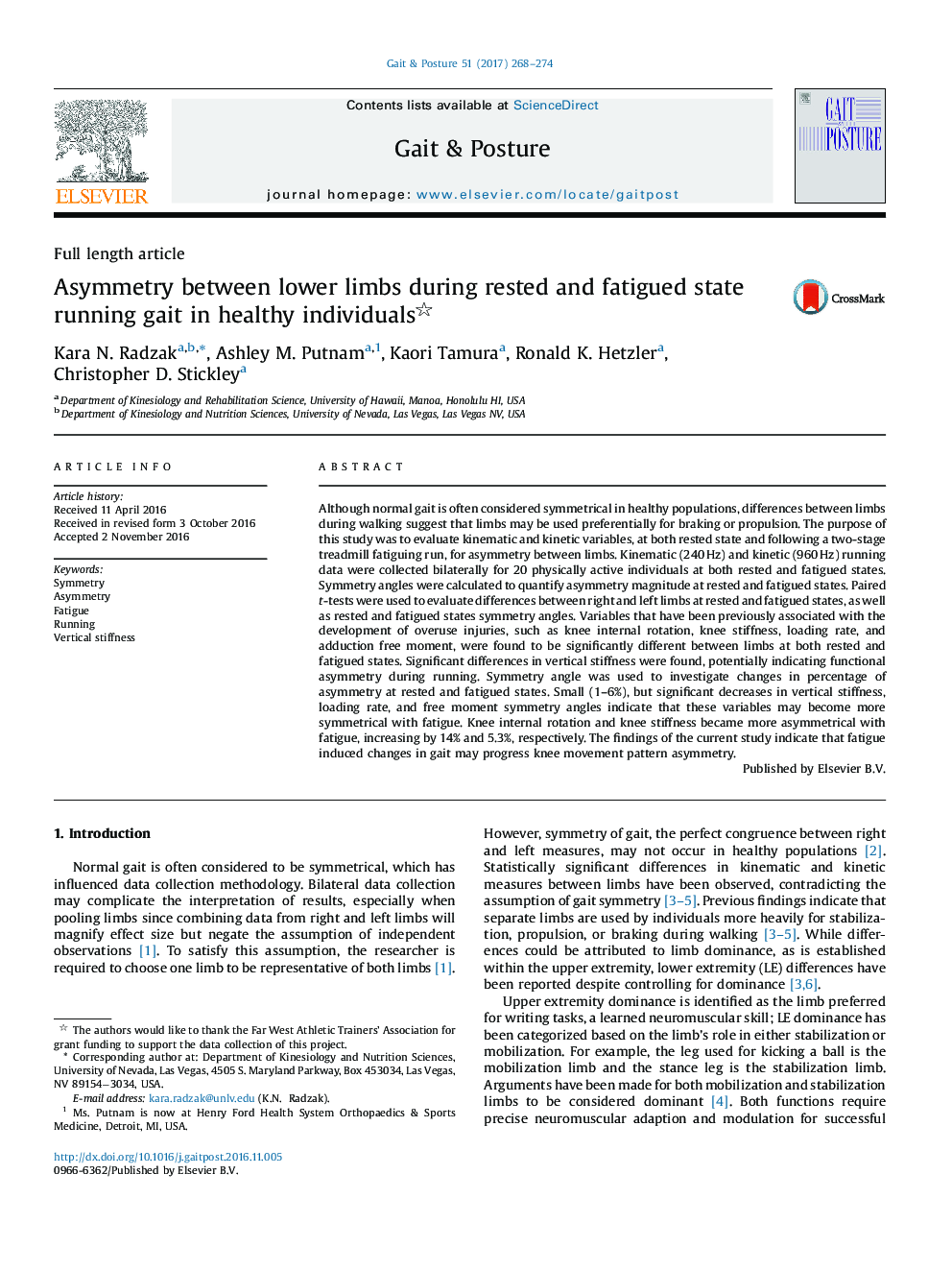| کد مقاله | کد نشریه | سال انتشار | مقاله انگلیسی | نسخه تمام متن |
|---|---|---|---|---|
| 8798727 | 1603844 | 2017 | 7 صفحه PDF | دانلود رایگان |
عنوان انگلیسی مقاله ISI
Asymmetry between lower limbs during rested and fatigued state running gait in healthy individuals
ترجمه فارسی عنوان
نامتقارن بین اندام تحتانی در حالت استراحت و خسته در حال اجرا در افراد سالم
دانلود مقاله + سفارش ترجمه
دانلود مقاله ISI انگلیسی
رایگان برای ایرانیان
کلمات کلیدی
تقارن، نامتقارن، خستگی، در حال اجرا سختی عمودی،
موضوعات مرتبط
علوم پزشکی و سلامت
پزشکی و دندانپزشکی
ارتوپدی، پزشکی ورزشی و توانبخشی
چکیده انگلیسی
Although normal gait is often considered symmetrical in healthy populations, differences between limbs during walking suggest that limbs may be used preferentially for braking or propulsion. The purpose of this study was to evaluate kinematic and kinetic variables, at both rested state and following a two-stage treadmill fatiguing run, for asymmetry between limbs. Kinematic (240Â Hz) and kinetic (960Â Hz) running data were collected bilaterally for 20 physically active individuals at both rested and fatigued states. Symmetry angles were calculated to quantify asymmetry magnitude at rested and fatigued states. Paired t-tests were used to evaluate differences between right and left limbs at rested and fatigued states, as well as rested and fatigued states symmetry angles. Variables that have been previously associated with the development of overuse injuries, such as knee internal rotation, knee stiffness, loading rate, and adduction free moment, were found to be significantly different between limbs at both rested and fatigued states. Significant differences in vertical stiffness were found, potentially indicating functional asymmetry during running. Symmetry angle was used to investigate changes in percentage of asymmetry at rested and fatigued states. Small (1-6%), but significant decreases in vertical stiffness, loading rate, and free moment symmetry angles indicate that these variables may become more symmetrical with fatigue. Knee internal rotation and knee stiffness became more asymmetrical with fatigue, increasing by 14% and 5.3%, respectively. The findings of the current study indicate that fatigue induced changes in gait may progress knee movement pattern asymmetry.
ناشر
Database: Elsevier - ScienceDirect (ساینس دایرکت)
Journal: Gait & Posture - Volume 51, January 2017, Pages 268-274
Journal: Gait & Posture - Volume 51, January 2017, Pages 268-274
نویسندگان
Kara N. Radzak, Ashley M. Putnam, Kaori Tamura, Ronald K. Hetzler, Christopher D. Stickley,
